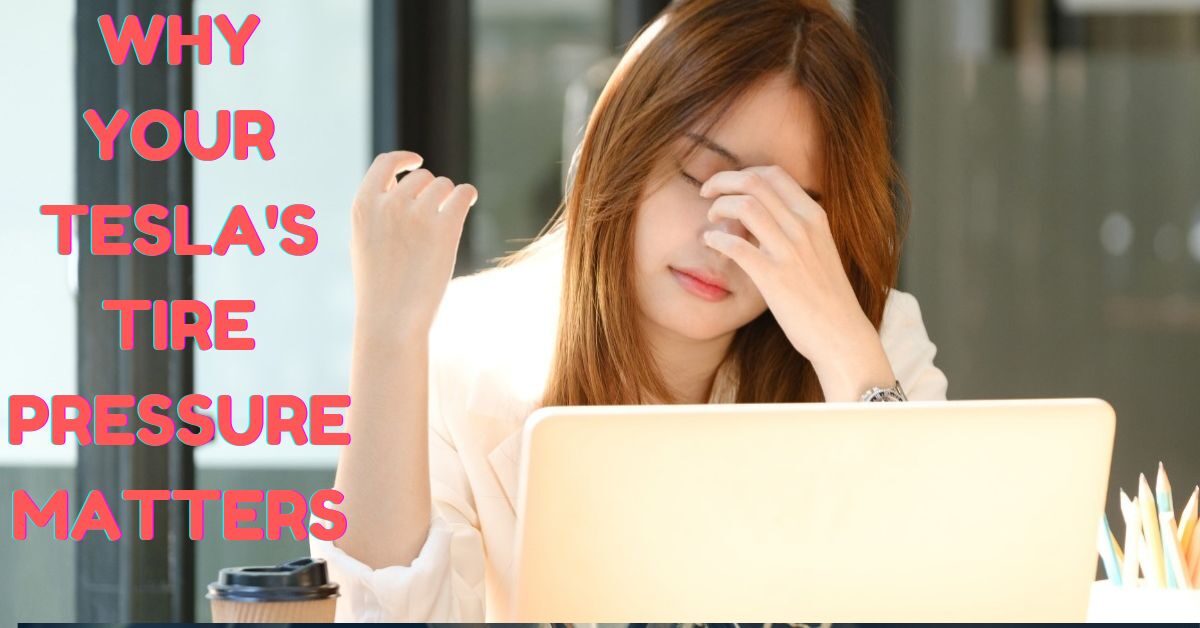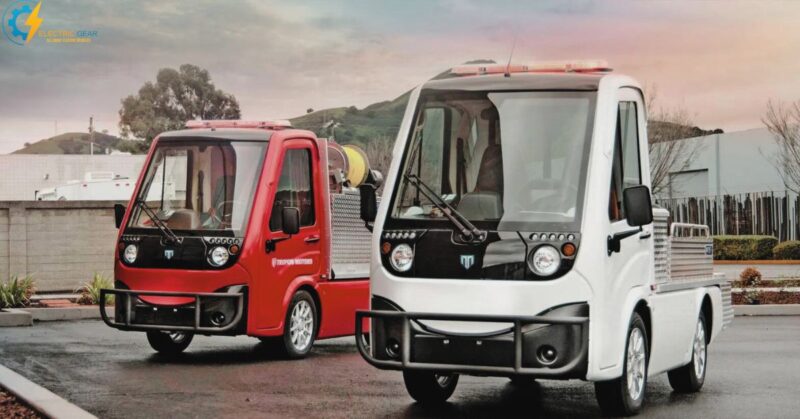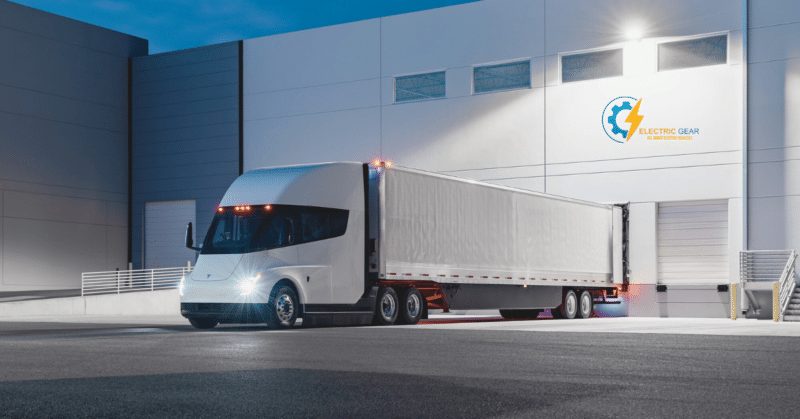Keeping your Tesla tire pressure to the recommended level is essential for optimal performance and vehicle safety. As a general rule, Tesla suggests monitoring and changing tire pressure once a month.
Tesla models and tire sizes have a range of acceptable inflation pressures. If a Tesla owner can’t locate the suggested Tesla tire pressure levels in the handbook, he should look at the driver’s side door frame or touchscreen display. The car’s handling, fuel economy, and tire life may suffer from improper tire pressure.
Tesla Tire Pressure
IT IS BETWEEN 40-45 PSI
Due to the heavier battery packs and increased regular torque that the tires suffer, electric vehicles require some additional tire criteria. It’s all out essential to maintain your wheels and avoid blowouts. Doing so will go a long way to protect yourself and your passengers with your investment in Tesla.
We will discuss in detail why accurate tire pressure is a mandatory part of your Tesla maintenance, and also learn how to check tire pressure and make it a habit to check tire pressure.
Depending on the Tesla Model and the vehicle configuration, the recommended tire pressure ranges from 40-45 PSI. Tesla will send a warning notification to its users in a potential update if the tires are under or over-inflated.
Why Your Tesla’s Tire Pressure Matters
Due to the instant and quick torque —for which EVs are famous — Tesla EVs are known to cause fast wear and tear of tires, and their tire rubber diminishes by grinding at an alarming rate than their ICE counterparts, if not properly looked after them.
Among all common tire degrading factors is the underinflation of tires. It causes them to overheat, causing their craking, separate treads, and potentially blowouts.
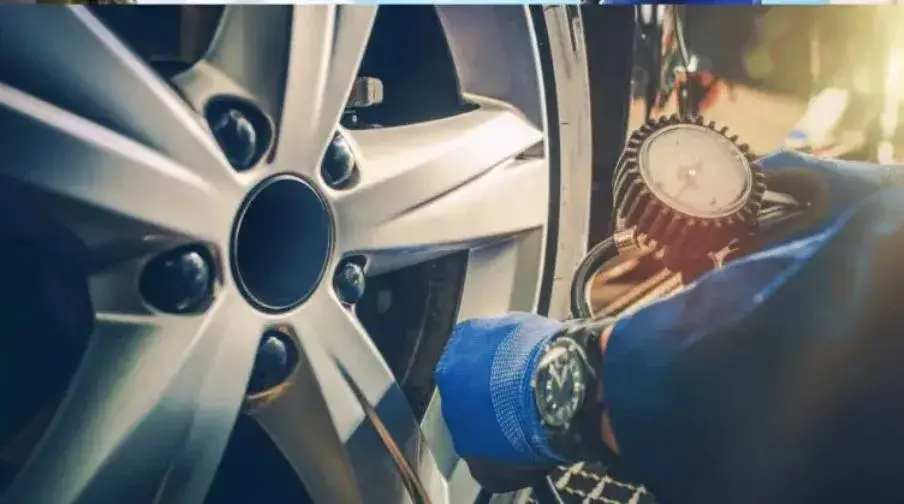
Underinflation also causes you to lose your vehicle control by reducing steering control and hardly and unevenly stopping while braking.
It also badly affects the mileage, and according to an NHSTA report, every 1% tire reduction can reduce driving range by up to 0.3% tire friction by increasing the surface area.
The same is true if the tires are overinflated, and it too lets you control driving because it reduces the surface area.
Tesla Tire Pressure by Model
There is a brief rundown of recommended psi and checking methods for each Tesla Model:
Tesla Tire Pressure Model 3
- Recommended cold pressure
The typical air pressure in Tesla Model S tires is 42-45 psi. It should be in between and can be reduced to 42 to get travel comfort and more for added range.
- TPMS: Traditional 433 MHz Tesla tire pressure checking sensors are used in Tire Pressure Monitoring System (TPMS).
How to Check TPMS in Model 3
- Swipe the card on the left side of the main screen, and the screen will display all the Tesla tire pressure in bars or psi. Select-control from the main menu and go to service.
Tesla Tire Pressure Model Y
Recommended Model Y cold pressure:
- It’s from 40 to 45 psi ( However, 42 psi is generally recommended)
- TPMS: Tesla’s tire monitoring system uses Bluetooth sensors.
How to Check Model Y Tire Pressure (TPMS):
- Like the Model 3, swipe left on the main screen until you find the tire pressure display, showing all wheels’ tire pressure.
- You will also see the tire pressure display if you go to control and service from the main menu. This feature will also show you the current tire pressure of your vehicle.
Tesla Tire Pressure Model X
Recommended Model X cold pressure:
It’s from 40 to 42 psi
- TPMS: “Standard” 433mhz tire pressure sensors are used in Model 3 for monitoring tire pressure.
- It is important to note that Tesla Model X uses different front and rear tires, and one needs to know the pressure requirements frequently vary if the tires are different from the factory fitted.
How to Check Model X Tire Pressure (TPMS)
- Scroll the wheel found left on the steering until you find the “tire pressure visualization.” It shows the tire pressure of all tires after almost 15 miles of driving.
- You will also see the tire pressure display by going to control and service from the main menu. This feature will also show you the current tire pressure of your vehicle.
Tesla Tire Pressure Model S
Recommended Model S cold pressure:
It’s from 40 to 42 psi
Tesla Tire Pressure Monitoring System (TPMS):
- Model S uses a “standard” 433mhz tire pressure sensor to provide information regarding tire pressures.
Tesla model’s tire pressure display
How to Check Tire Pressure of Tesla Model S via TPMS:
- Scroll the left wheel on the steering until you find the “tire pressure visualization.” It shows the tire pressure of all tires after almost 15 miles of driving.
- You will also find the tire pressure display by just going to control and service from the main menu. This feature will also show you the current tire pressure of your vehicle.
Checking and Adjusting Tire Pressures
- To determine the recommended tire pressure, consult the Tire Information sticker on the driver’s middle door panel.
- Take off the valve cap of the tire.
- To measure pressure, tightly place an exact tire pressure digital gauge into the valve.
- To achieve the specified pressure, add or subtract air as necessary.
Tesla Tire Pressure Gauge
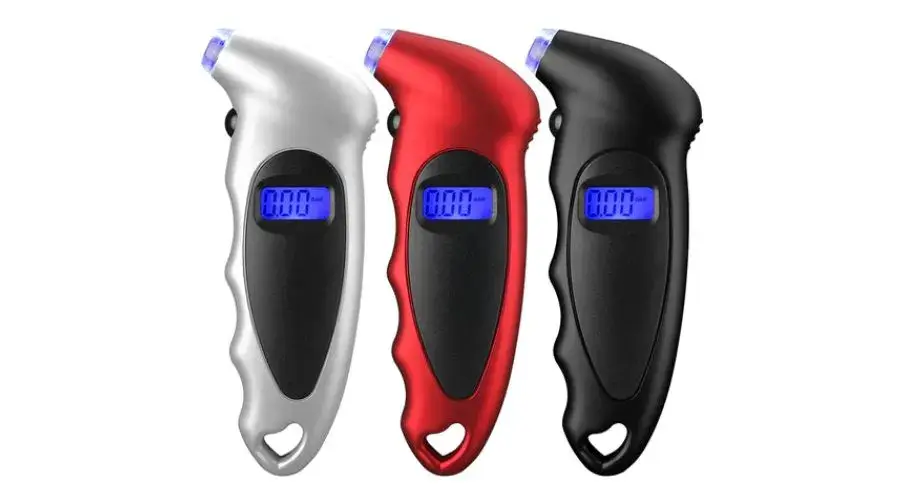
- The tire gauge is essential for Tesla Model 3 S X owners.
- Tire air pressure gauge that is digital.
- Display on LCD, with features that are simple to read.
- To guarantee safe driving, monitor the temperature of your tires at any time, anywhere, using this simple and practical tool.
- The four modes are PSI, BAR, KPA, and KG/CM2.
- A tire gauge is a reliable tool for all Tesla owners. The measurement is exact and of great quality, and you can rely on it.
- Every Tesla owner should receive this excellent and practical gift.
Instructions:
- Measure the car’s air tire pressure when not used.
- Turn on the digital tire pressure gauge with the ON/OFF button.
- Put the gauge on the tire valve strictly, and ensure no leakage.
- The measured value will be retained for 90 seconds on the gauge and then automatically disappear.
- It will be turned off if the ON/OFF button is pressed for 3 seconds.
- There are four different pressure units: PSI, BAR, KPa, and KG/CM2, and they can be adjusted by pressing the ON button again.
Tesla Tire Pressure Monitoring System Fault
If a message pops up on the central screen of your Tesla EV warning, the “tire pressure monitoring system fault – Pressure sensor fault may clear next drive.” It’s time to reset by yourself, or needs a service appointment from a certified Tesla consultant.
Resetting the (TPMS) Sensor of the Tire Pressure Monitoring System
- Turn on the touchscreen, and from here, touch Controls > Settings > Service and Reset > Tire Pressure Monitor > and Reset Sensors.
- If it does not work, let’s try it manually and check the tire pressure of all tires conventionally by a gauge. Measure the recorded reading to those of standard by TPMS. Next, take some air and refill the back left tire according to the standard. If by doing so, the issue still needs to be fixed; it’s a tough time to go to a consultant.
If the wheels of a Tesla are changed, this setup must be performed. Additionally, this operation may be necessary if the air pressure has been adjusted and the tire pressure light is on.
What you will need
- No additional tools or spare parts are required.
Procedure
- Tap the automobile icon in the lower-left corner of the touchscreen display to access the service menu.
- Click the symbol for wheel customization in the service section.
- Ascertain that the wheel is the appropriate size for the car. For a list of sizes, use the drop-down menu, and tap the confirm button to make the selection.
- Press the reset TPMS sensor button in the service menu.
- Ensure that all of the tires are properly inflated. The driver’s door’s panel label will have the recommended tire pressure.
- Once the tires are set up correctly, choose the learn new pressures option from the touchscreen prompt.
- For the car to get the new pressures, it must be driven at speeds above at least 16 mph for a while.
- After resetting, the tire pressure sensors report the pressures appropriately. You are finished when the TPMS light turns off!
Specifications
- 42 PSI: For front tire pressure
- 35 PSI: For rear tire pressure
Why properly inflated tires are important
- Maximum fuel economy
- Protection
- Handling
- Prevention against blowouts
- Effective braking
Tesla Tire Pressure Best Practices
Recommended tire pressure for Tesla EVs is from 40 to 45 PSI. It can vary depending on the load of the vehicle. A potential update will also notify the users if the tire is under or over-inflated.
Every Tesla is designed with a Tire Pressure Monitoring System in each wheel. These sensors, however, don’t provide reading while the EV is static and only become functional after driving for 15 minutes above 25 miles p/h.
While considering them in mind, below are some of the essential tips that will maintain the tire pressure of Tesla at an optimum level across the year.
Check it Regularly:
Since most EV tires tend to lose almost one psi a month, it is ideal for fixing a day once a month to keep a check and correct the all-wheel pressure according to the standard.
Measure Before You Drive (Or At least 3 Hours After):
The importance of manually checking your tire pressure cannot be overstated. It indicates that it is best to take pressure readings after a few hours of not driving. Your Tesla tires start warming up after you’ve traveled more than a mile. It’s not wise to take tire pressure readings during that state and fill them after a drive. By doing so, you will likely under-inflate the tires.
Be Aware of the Weather:
In a place where temperature fluctuations are usual, be more mindful regarding your tire pressure. It is because tires may lose one psi against every 10 degrees in temperature drop. So, in such weather, additional care is advised.
Keep Small Air Compressed:
It’s always advisable to keep a portable small air compressor with you while driving. It helps get the right PSI convenient.
Flat Spots Prevention:
Relatively brief storage might result in flat spots in your Tesla tires, particularly if the tires are underfilled. It’s recommended to deflate your tires to the standard pressure before driving again after inflating them to the maximum psi rating for storage. It may lessen the possibility of damage and help you avoid flat areas in your tires.
Improving Tire Mileage
Maintaining tires at the specified tire pressures, sticking to speed restrictions and recommended speeds, and minimizing the following will increase the life of your tires.
- Sharp bends and prodigious braking.
- Roadside debris and potholes.
- Running into curbs while parking.
- Filling tires with fluids that could damage them.
- Sudden withdrawal or forceful acceleration.
Conclusion
Keeping the right tire pressure in your Tesla is important for its safety, performance, and fuel economy.
To keep your tires in great shape, check and adjust the pressure in them on a regular basis, pay attention to changes in the weather, and use the tools and methods that Tesla gives you. If you follow these steps, you can improve your driving experience and make your tires last longer.

Imran is an experienced content writer who crafts engaging and informative articles for a variety of industries. With a keen eye for detail and a passion for storytelling, Imran delivers high-quality content that resonates with readers. Whether he’s writing blog posts, social media content, or website copy, Imran is committed to delivering compelling content that drives results.

